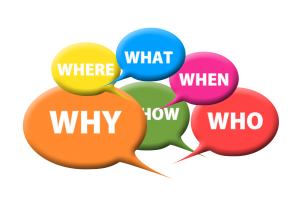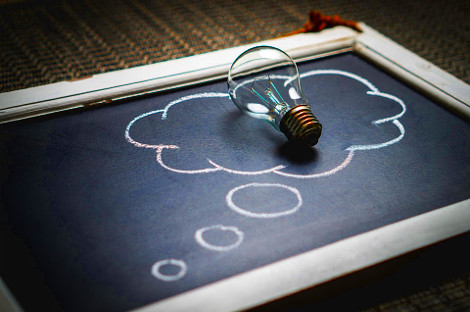Understanding & Treating ADD/ADHD
Attention Deficit Disorder/Attention Deficit Hyperactivity Disorder is treatable.
What is ADD or ADHD?
ADD is short for Attention Deficit Disorder and ADHD is short for Attention Deficit Hyperactivity Disorder. ADHD is the main terminology that is now being used in psychiatry. ADHD is not a or behavioural disorder rather it is a complex brain disorder that is physiological in nature. It is a physical impairment that begins in childhood, it is a developmental disorder of the brain. This impairment includes the executive functions as well as the self-management system of the brain.
 What are the differences between ADD and ADHD?
What are the differences between ADD and ADHD?
You may have heard the terms ADD (Attention Deficit Disorder) and ADHD (Attention Deficit Hyperactivity Disorder) used interchangeably. According to the DSM-5 (Diagnostic Statistical Manual of Psychiatric Disorders version 5) the term ADD is no longer used only ADHD is now used, therefore these two terms are deemed to be the same.
Are there different kinds of ADHD or ADD?
According to the DSM-5 there are 3 different types of ADHD:
- Primarily Hyperactive-Impulsive ADHD
- Primarily Inattentive ADHD (formerly called ADD)
- Combined Type ADHD
Identifying Different Types of ADD and Attention Deficit Hyperactivity Disorder
According to a leading psychiatrist, Dr. Daniel Amen based on his use of functional neuroimaging, using SPECT scanning he has identified 7 different types based on over 10,000 brain scans of patients who have ADHD. Though he has many critics within his field he does have brain scan images to back up his claims. Here are the 7 different types:
Type 1: Classic ADD
The classic ADD/ADHD has symptoms which include:
- Being inattentive
- Distractible
- Disorganized
- Hyperactive
- Restless
- Impulsive
- Procrastination (in some cases)
Those who have the classic ADD/ADHD show to have reduced blood flow in the prefrontal cortex, cerebellum, and basal ganglia of the brain. The basal ganglia plays a role in the production of the hormone dopamine.
Therapeutic Considerations: help eliminate toxicity, support the brain in its functionality and help increase dopamine levels.
Type 2: Inattentive ADHD
Symptoms may include the following:
- Being inattentive
- Distracted easily (not hyperactive)
- Sluggish
- Slow-moving
- Low motivation (couch potatoes)
- Daydreamers
This type of ADHD is seen mainly in females and is often not noticed in childhood. The brain can show reduced activity in the prefrontal cortex including low levels of dopamine.
Therapeutic Considerations: help eliminate toxicity, support the brain in its functionality and help increase dopamine levels.
Type 3: Over-focused ADHD
This includes the classic attention deficit symptoms plus:
- Difficulty shifting attention
- A frequent looping of negative thoughts and/or behaviours
- Obsessive thinking
- Excessive worrying
- Inflexibility
- Frequently oppositional
- Argumentative in behaviour
People with Over-focused ADD have a deficiency of serotonin and dopamine which leads to anxious and irritable behaviours.
Therapeutic Considerations: help eliminate toxicity, support the brain in its functionality, and boost serotonin and dopamine levels.
 Type 4: Temporal Lobe ADHD
Type 4: Temporal Lobe ADHD
Temporal Lobe ADHD includes the classic attention deficit symptoms plus:
- Irritable
- Quick-tempered
- Aggressive
- Have dark thoughts
- Mood instability
- Mild paranoia
- May see or hear things that are not evidenced
- Learning Issues
- Memory issues
Those who exhibit Temporal Lobe ADHD have brain issues that show irregularities in their temporal lobes as well as lower activity in their prefrontal cortex.
Therapeutic Considerations: help eliminate toxicity, support the Temporal Lobe, help soothe neuronal activity, help stop neurones from over-firing or firing unpredictably.
Type 5: Limbic ADHD
Limbic ADHD includes the classic ADHD/ADD symptom presentation in addition to:
- Chronic low-level sadness (not including depression)
- Negativity that exhibits a “glass-half-empty” attitude
- Low energy
- Frequent feelings of hopelessness
- Frequent feelings of worthlessness
- Love self-esteem
The Limbic ADHD types exhibits excessive activity in the limbic part of the brain where moods are controlled. There is a reduced activity in the prefrontal cortex when they are relaxing as well as when they are focusing on a task.
Therapeutic Considerations: help eliminate toxicity, support of the Limbic system, liver support, and brain balancing.
Type 6: Ring of Fire ADHD
This type of ADHD reveals more if not all of the classic symptoms plus the following:
- Extremely distractible
- Angry and irritable
- Extreme sensitive to noise, light, touch including the feeling of their clothes
- Show inflexibility
- Extremely verbal
- Excessively oppositional
- Cyclic moodiness
SPECT imaging of the brain reveals that those with Ring of Fire ADHD have an overall overactive brain. Activity in the cerebral cortex and many other areas of the brain are constantly over stimulated.
Therapeutic Considerations: help eliminate toxicity, support the brain in its functionality, help increase GABA and serotonin levels.
Type 7: Anxious ADHD
Anxious type of ADHD includes the classic symptom presentation of ADHD and ADD plus:
- Anxiety
- Physical tension
- Headaches
- Stomachaches
- Mental and emotional freezing when in situations that cause anxiety
- Anticipating the worst case scenario
Those who exhibit the Anxious ADHD have higher than normal activity in the part of the brain known as the basal ganglia. The basal ganglia aids in making dopamine. The difference with this type of ADHD/ADD is that others have lower activity in basal ganaglia.
Therapeutic Considerations: help eliminate toxicity, support the brain in its functionality with special focus on the basal ganglia, and boost GABA and dopamine levels.
Can ADHD or ADD be cured?
Attention Deficit Disorder/Attention Deficit Hyperactivity Disorder is treatable where an individual can begin to exhibit more normalized behaviour with better functionality overall. Curability is a strong word which everyone desires but it is better said that it is treatable. In psychiatric, neurofeedback, dietary, lifestyle changes, holistic and homeopathic treatments a person can realize a better quality of life with better functionality.
Since ADHD is physiological rather than behavioural in nature there needs to be a determination between genetic mutations, known as SNPS, toxicity of the individual’s terrain (body and brain), diet, and lifestyle for effective treatment.
ADHD/ADD treatment considerations
-
Genetic testing followed up with PureGenomics assessment platform
-
Appropriate Diet
-
Lifestyle adjustments
-
Detection and elimination of electromagnetic and radiation issues
-
Holistic and Homeopathic treatment
- Heavy metal testing and safe elimination
-
Brain Harmonizing Program
Notice/Disclaimer:
The information presented here is for the purpose of general information and is not intended for diagnosis or treatment. Remember to always consult your physician before making any changes to your own treatment. Your physician needs to be aware of every supplement and medication you’re taking in order to help you avoid any problems.
References:
https://www.verywellmind.com/understanding-dr-daniel-amens-6-types-of-add-20466
https://www.cdc.gov/ncbddd/adhd/diagnosis.html
More Resorces To Better Your Life!





